If historians were to single out the most standard form of Kashmiri shawl, it would be the Kani shawl.
The remarkable kani pashmina shawl is the best of pashmina that you can ever buy. Made from wooden needles on a traditional handloom, it has a distinguishable, Mughal pattern that is woven into the fabric. Every shawl has knots. Artisans craft them as per a set design. Note that only the trained craftsmen are knowledgeable enough to do it the right way. For this reason, Kani shawl got registration under GI (Geographical Indication) by The Craft Development Institute.
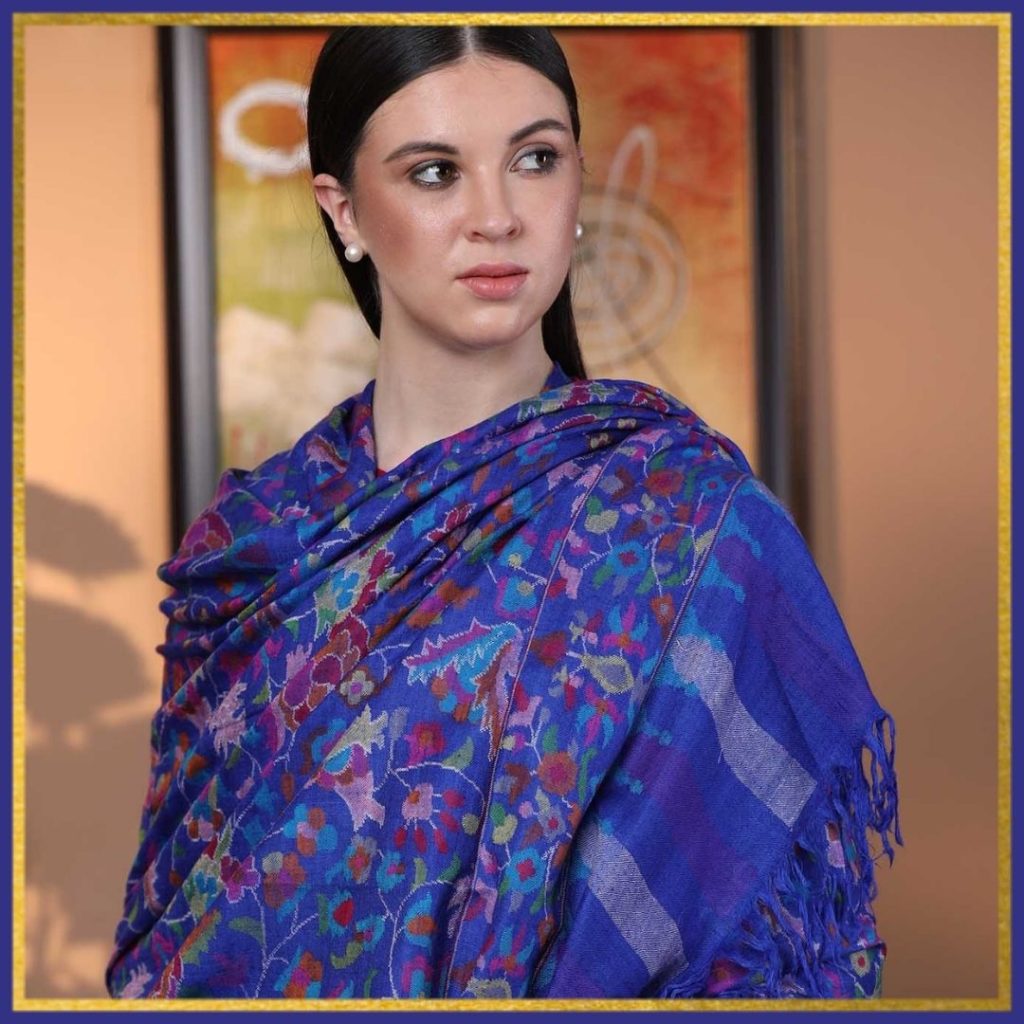
A Kani shawl has a unique demeanor. It has proved itself to be an ethereal treat for the aesthetic craft admirers. The intricate pattern of weaving, the eclectic colours, and the overall graceful mien has art patrons smitten to the core, across the globe.
Kani Shawls - The Finest of Pashmina
Kani shawl comes from Kanihama, a small village 20 kilometres away from the main city. Kanihama once had a monopoly over Kani shawls. It was later that artisans from other villages learnt making Kani shawls. Kanihama comes from two words, ‘Kani’ meaning wooden sticks, and ‘Hama’ meaning village. The craft of Kani weaving uses small sticks of wood called ‘Kanis’. Around Kanis, artisans wind colourful weft thread to create magical patterns over a shawl. Kanis are made of a type of forest wood called ‘poos tul’
Patrons believe that Kani shawl weaving of Kashmir originates from Persia. In the Mughal period, more than 15000 Kani looms were functional in the valley. It was during the rule of Zain ul Abideen (Budshah).
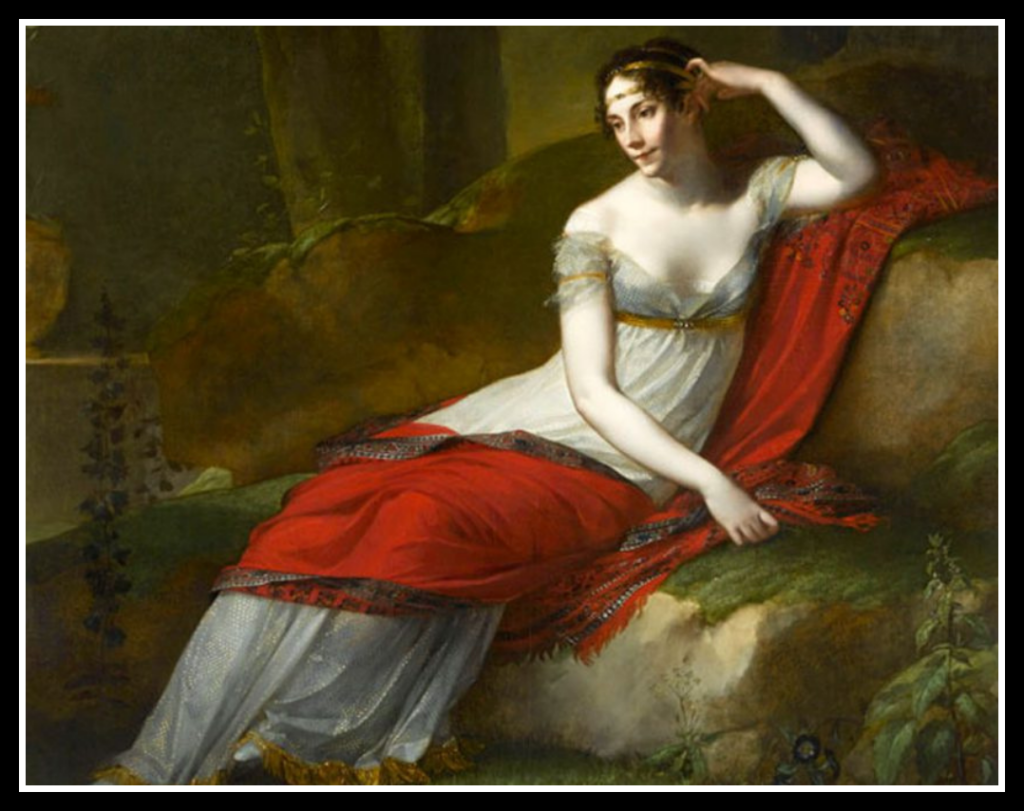
But with time, Kani shawl faced some major setbacks and moved into a tragic and dark age. This period saw major blows to many handloom crafts in Kashmir. Kani shawl weaving would have totally disappeared had not a family saved this craft even during the craft impediment. This family is the ‘Wani family of Kanihama’. And since the late 1700s, they have held onto this technique and did revive it later on.
Technique of Weaving
Kani shawl is an extraordinary expression of art. It is handwoven using a number of eyeless wood sticks called Kanis or Tujis. These shawls feature intricate weft weaving in their making. As such, these hold a high value in the eyes of craft patrons.
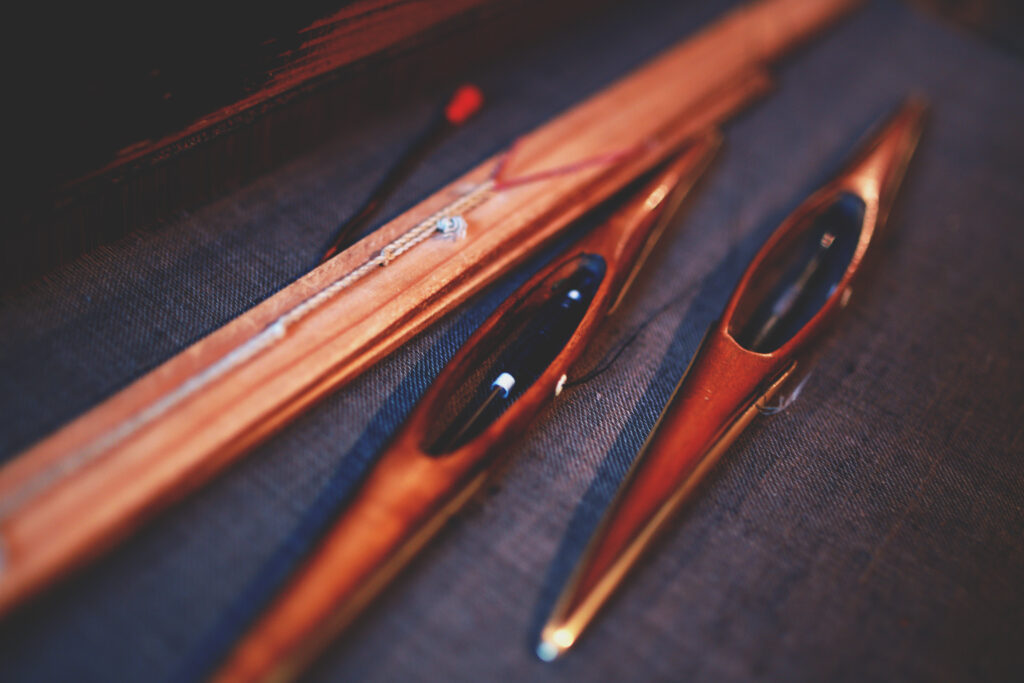
These shawls look more ethereal when made in pure Cashmere. Even though 80% of Kani shawls are made in Cashmere itself, some designs use silk and other fine wool for more strength and sheen.
Kani Artisans are the most skillful ones with great patience. The degree of concentration that these artisans put into this painstaking work is just unbelievable. An artisan is capable of weaving one inch a day at the most. But it depends on the complexity and labyrinth patterns of the design that artisans have to weave. Some Kani shawls take anywhere between 3 to 36 months to complete.
The Weavers of Kani Pashmina Shawl
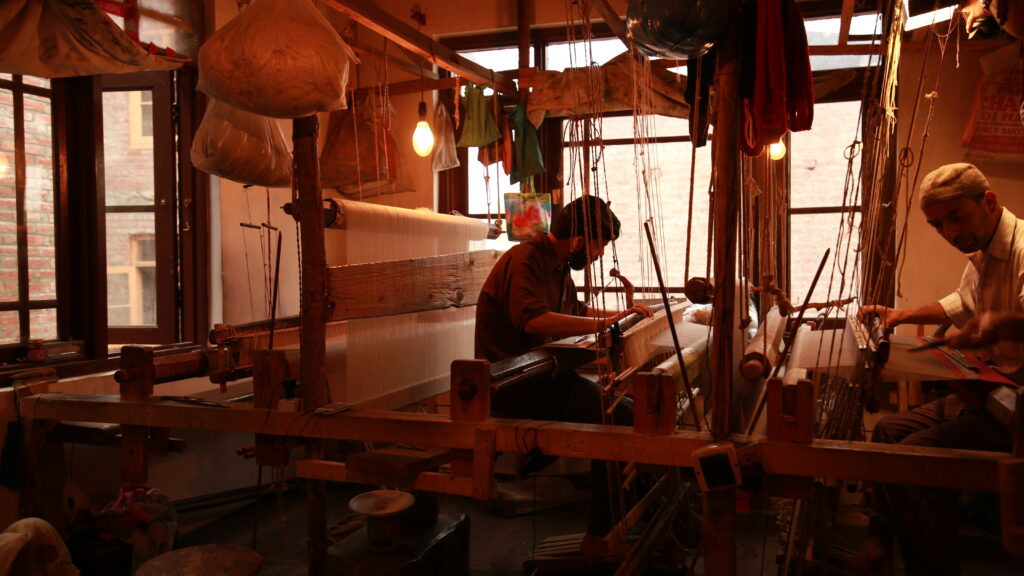
Kani weaving is a centuries-old craft practiced by skilled craftsmen who have learned it from their forefathers.
These families have been working patiently with talent and devotion. As such, their work has captivated admirers all around the globe. Working between 5 - 7 hours a day, in between tending to their smallholdings, they lovingly create these masterpieces.
Process of Making
Artisans weave a Kani shawl like a carpet. A veil of warp threads in front of the weaver has to be intruded with wefts. These wefts are colourful threads that weavers wind around bobbins. Around 75 to 100 bobbins are in use at a time to weave a Kani shawl with an overall design.
The Design
Kani shawl making process is quite complicated. Artisans start with the design. But unlike other shawls where design is imprinted or stamped over the shawl itself, here the design is written in a code, called ‘Talim’, on a graph paper.
The Pattern
A Talimguru prepares the coded pattern. He is an expert in converting the design to codes, easily understood by weavers.
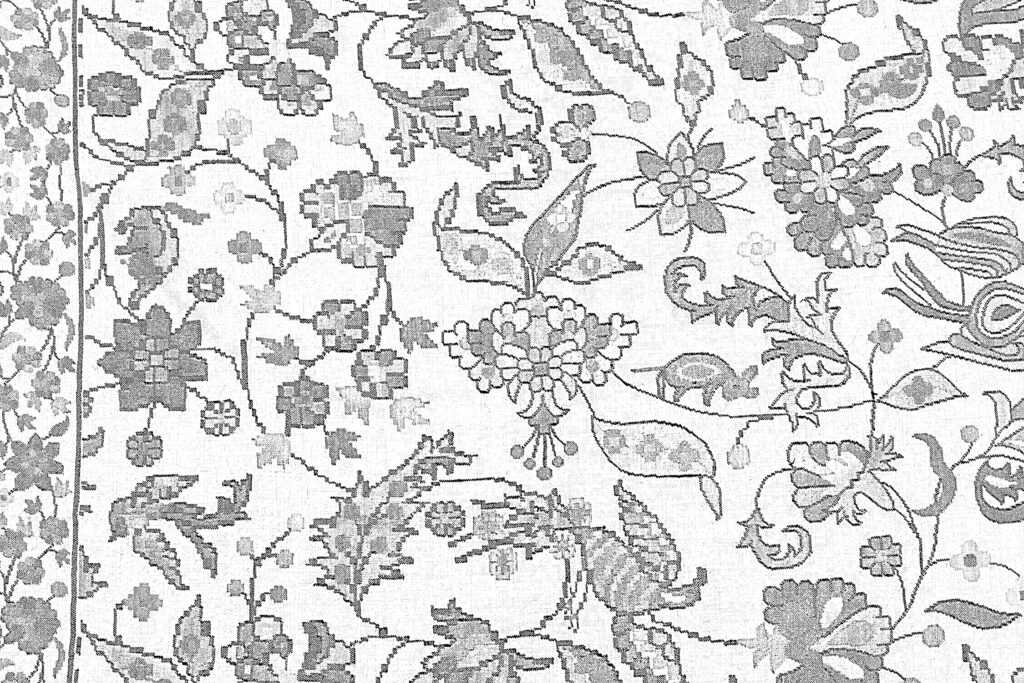
The Warp
Next process is the making of warp by a warp maker.
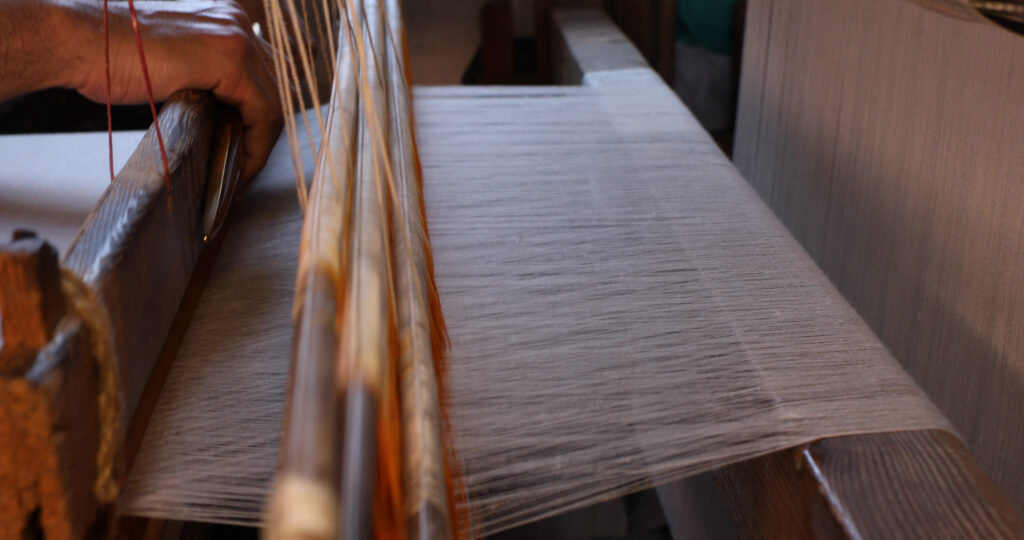
The Weaving
A number of colourful bobbins are arranged as per the design requirement. Weaving starts with the help of talim. As soon as a different colour is required in the design, two bobbins are joined together and the process is continued till the shawl is complete
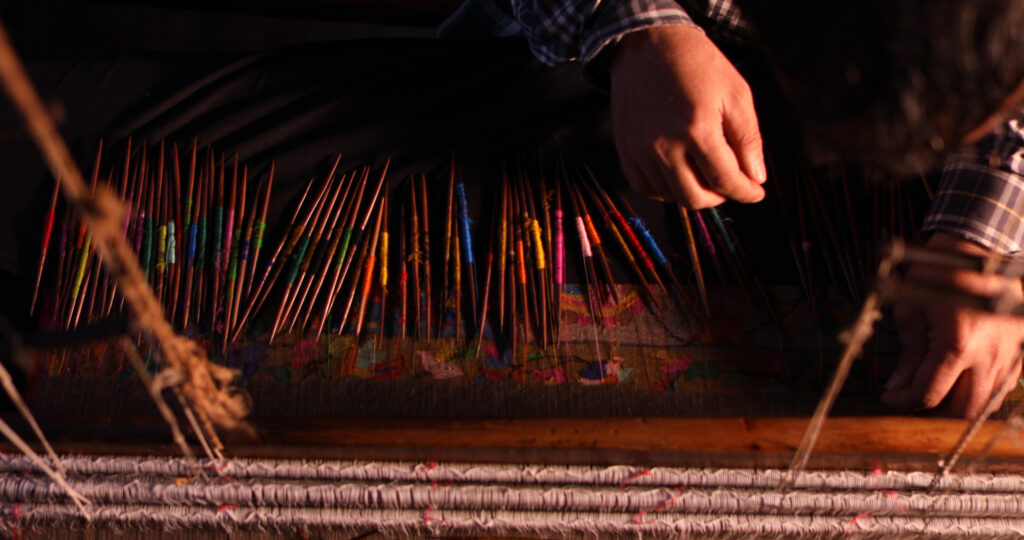
Types of Kani Shawls
Since Kani shawls are woven and not embroidered, these are lightweight and exceptionally beautiful. A few types of based on designs are:
Kani jamawar/Pur Mattan shawl
A Jamawar shawl takes around two years to complete. This is because the Kani patterns are spanning all over the base with eclectic patterns and motifs
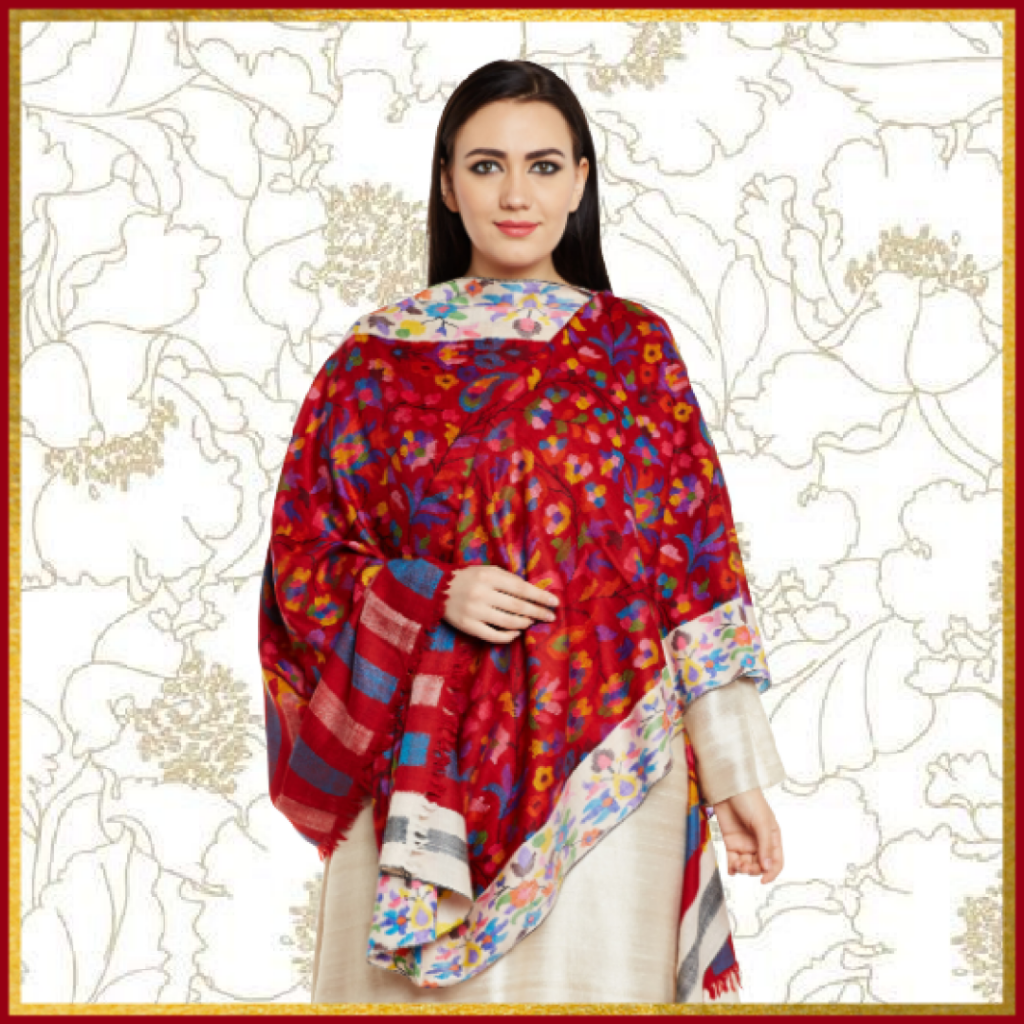
Palladaar Kani Pashmina
Featuring the Kani weave only on its borders or Pallas, a Palladaar shawl takes a few months to be completed.
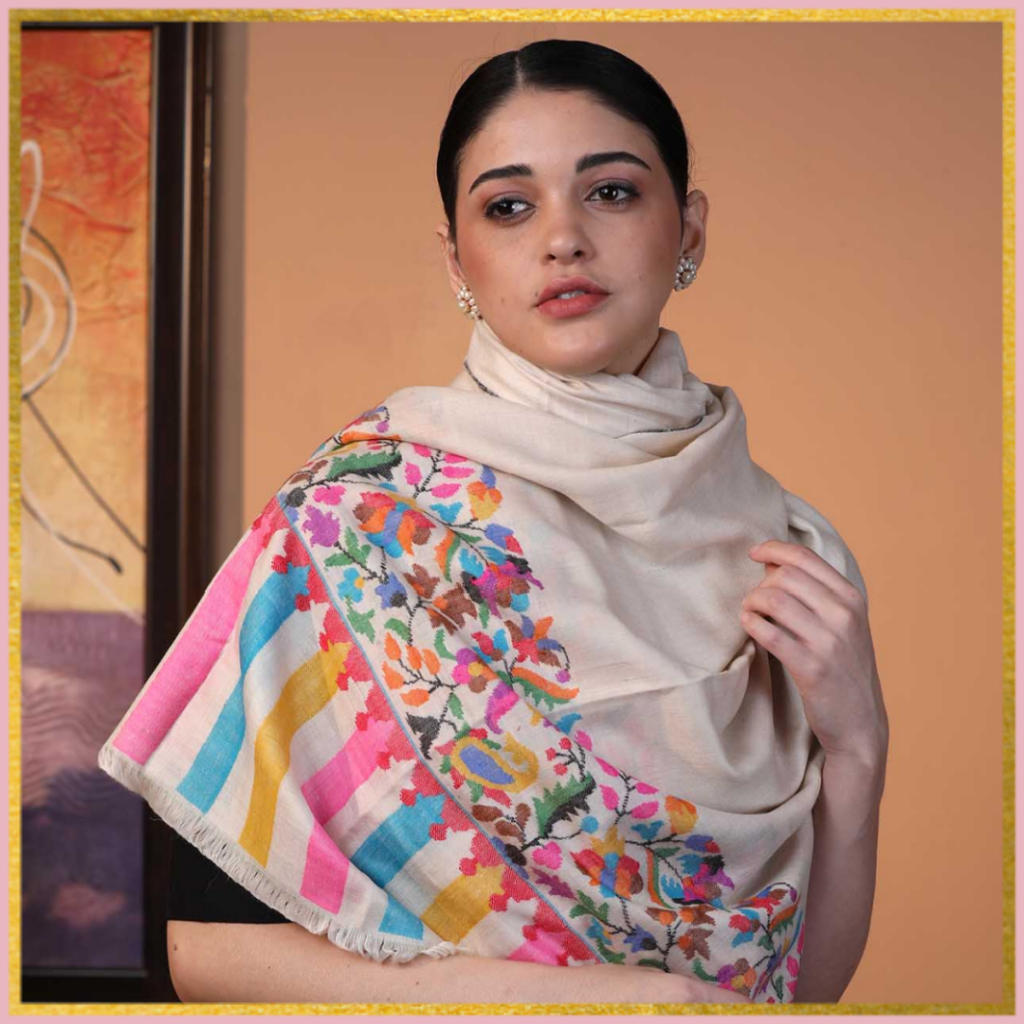
Chand-daar or Moon shawl
This unique variety features a central full medallion design and small four medallions on four corners.
GI Protection
Kashmiri Kani Shawl has been given the honor of the Geographical Indication (GI) status. This status prohibits people from selling a shawl made at other places under the same name. In an attempt to protect its originality, the government of Jammu and Kashmir has registered it under the GI Act. Now, no other country can produce or copy such shawls.
Specifications which led to the GI protection
- Kashmiri Kani shawl has a long and documented history of more than 300 years dating back to the Mughal era
- Pashmina wool is used as the base fabric which has a unique fineness and comes from the Changthangi goat found in a specific climate and geographical conditions.
- Kani shawl of Kashmir has a distinctive process of manufacturing with the help of Talim or code
- A local terminology of its weaving and processes
The GI registration of Kashmiri Kani shawl is the first milestone to start with the international branding of the Kashmiri handicrafts. It also ensures genuine and superior quality of craft for a customer. This much-needed breakthrough will make sure that the high-quality standard of these handicrafts would enhance their prominence in local as well as international market

Kani shawl is a magical creation of the most skillful and experienced Kashmiri artisans. No doubt these shawls created a furor and incitement in ancient Europe. As a matter of fact, the shawl has found a special place in some world-renowned places. Victoria and Albert Museum in London, the department of Islamic art at the Metropolitan Museum of Art, New York, and the Musée des Arts Décoratifs in Paris showcasing the charm of Kashmiri craftsmanship.